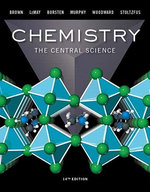?State whether each of the following statements is true or false. Justify your answer in each case. (a) When methanol, \(\mathrm{CH}_{3} \mat
Chapter 4, Problem 4.14(choose chapter or problem)
State whether each of the following statements is true or false. Justify your answer in each case.
(a) When methanol, \(\mathrm{CH}_{3} \mathrm{OH}\), is dissolved in water, a conducting solution results.
(b) When acetic acid, \(\mathrm{CH}_{3} \mathrm{COOH}\), dissolves in water, the solution is weakly conducting and acidic in nature.
Text Transcription:
CH_3OH
CH_3COOH
Unfortunately, we don't have that question answered yet. But you can get it answered in just 5 hours by Logging in or Becoming a subscriber.
Becoming a subscriber
Or look for another answer
